The convex surface of a thin concaveo-convex lens of glass of refractive index 1.5 has a radius of curvature 20cm. The concave surface has a radius of curvature 60cm. The convex sidei is silvered and placed on a horizontal surface.
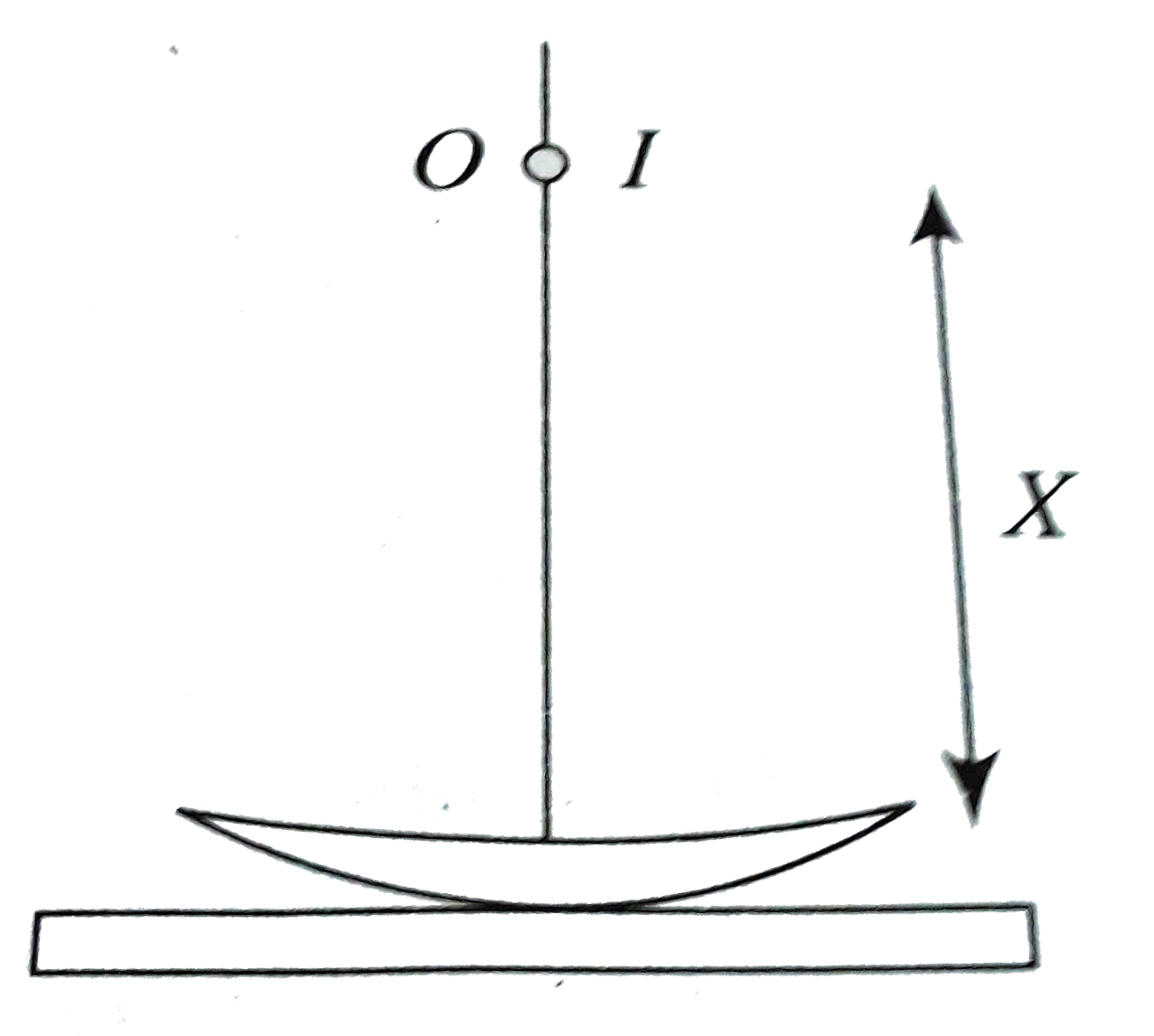
Q. Where should a pin be placed on the optice axis such that its image is formed at the same place?
x=5cm
x=20cm
x=15cm
x=25cm
The correct Answer is:C
Method 1: The optical arrangement is equivalent to the concave mirror of focal length F given by
1F=1fg+1fm+1fg
where fx is th efocal length of the lens without silvering and fm is the focal length of the mirror.
1fg=(n−1)(1R1−1R2)
=(1.5−1)(120−1+60)=160
fg=60cm
fg=R1/2=20/2=10cm
1F=160+110+160=860
F=608=7.5cm
For the image to be formed at the place of the object,
X=R=2F=7.5×2
=15cm
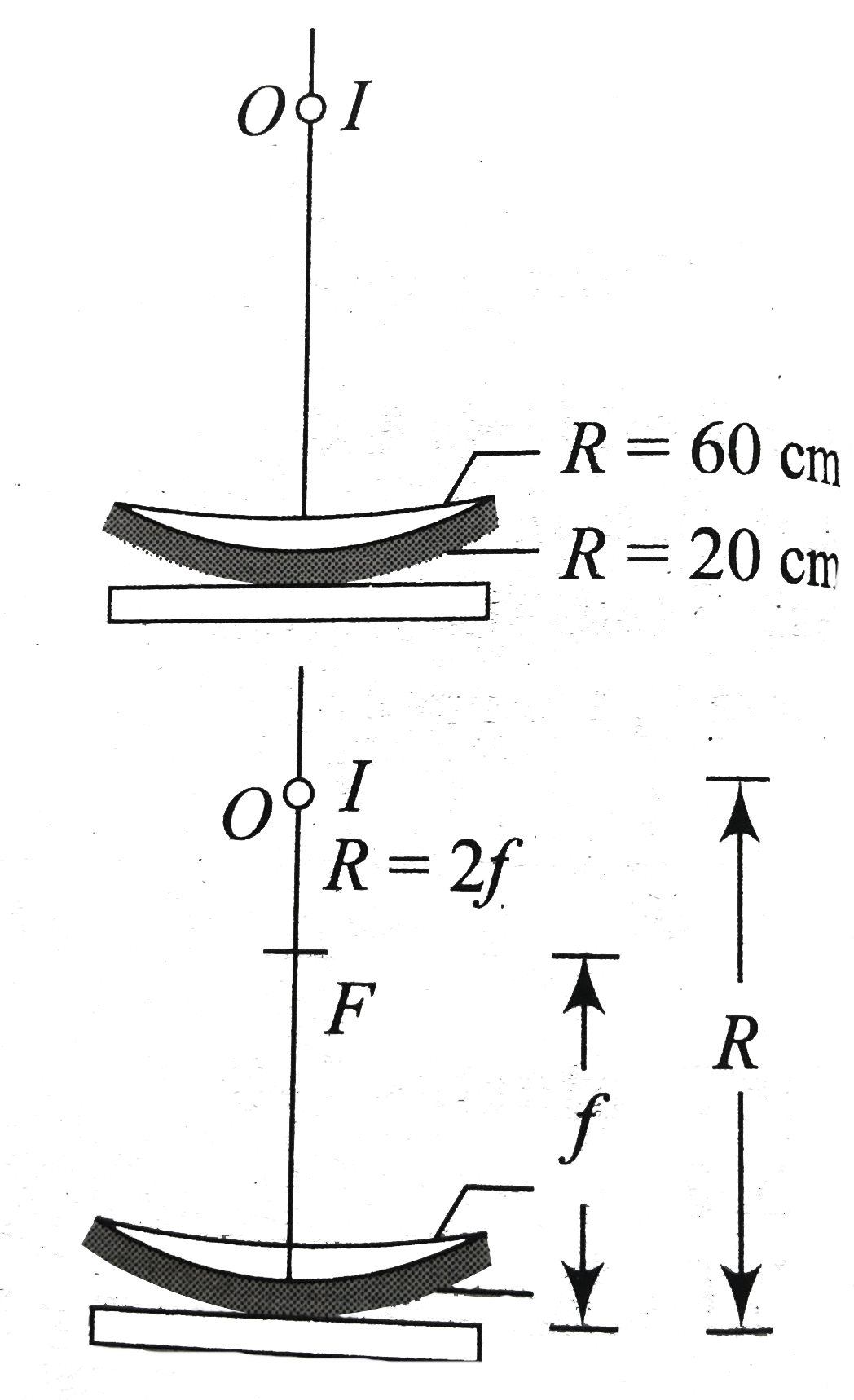
Method2: We use the relation
n2x2−n1x1=n2−n1R
For the object and the image to coincide, the rays fall normal on the reflecting surface. i.e., on the silvered face of the lens.
Then, the rays retrace backward and meet at the object point again (optical reversibility).
For the refraction at the upper surface of the lens,
n1=1.0,n2=1.5,x1=20,R=+60
(x2=+20 ensures that the rays fall on the silvered face normally. )
1.520−1.0x1=1.5−1.0+60
1.0x1=1.520−0.560=3.060
x1=15cm
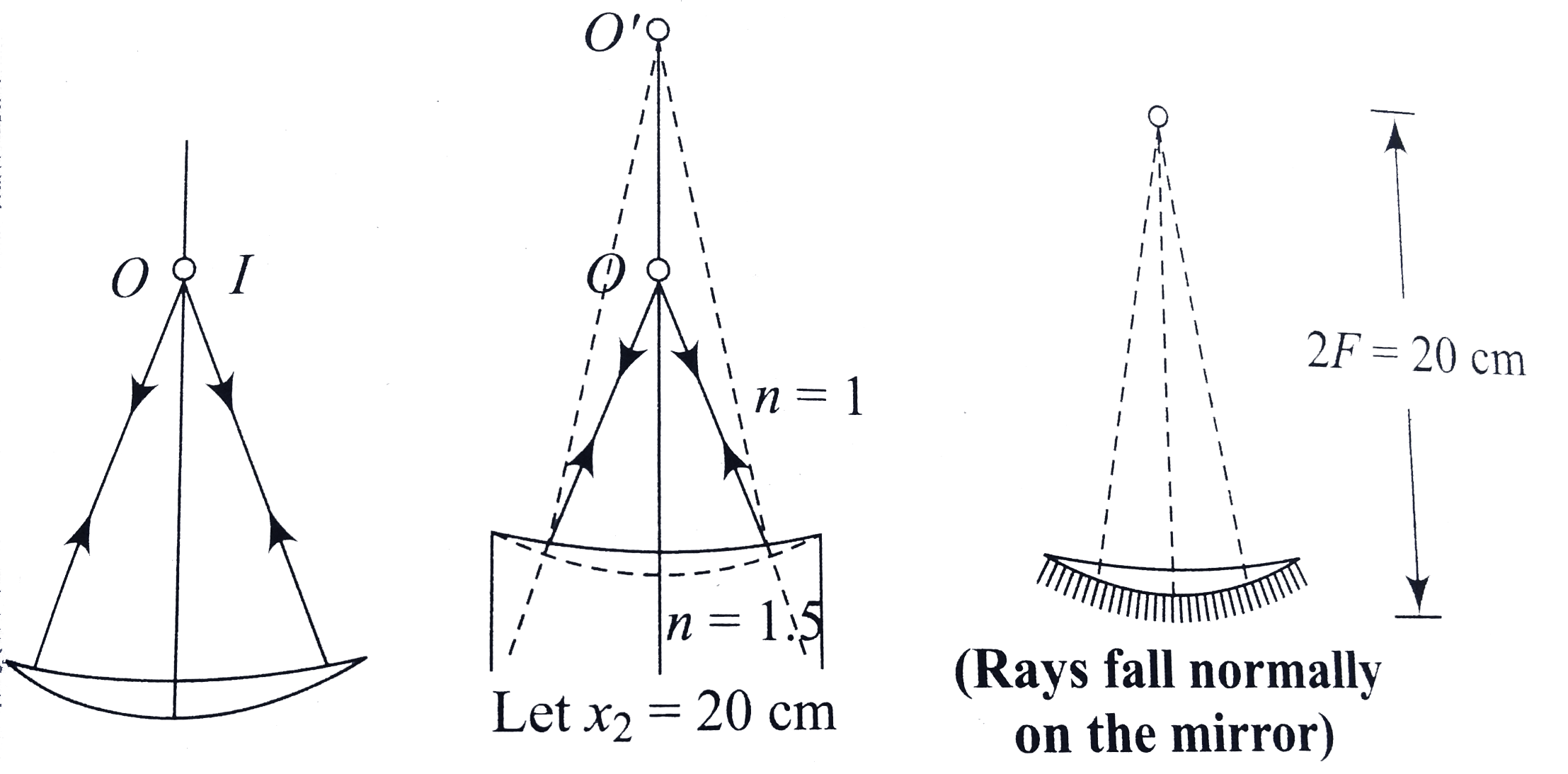
Method 3: We use lensmaker's formula and the equation
1f=1x2−1x1
The given optical arrangement can be visualised as a convex lens of focal length 60cm and a concave mirror of focal length 10cm kept in contact as shown in the figure.
If the rays fall normally on the mirror after the refraction through the lens, they will retrace backward and meet at the point of the pin again.
For the lens, x1=?
x2=+20 (for normal incidence on the mirror )
f=−60 (using cartesian-coordinate sign convention)
1−60=1+20−1x1

Topper's Solved these Questions
- GEOMETRICAL OPTICSBOOK - CENGAGE PHYSICSCHAPTER - GEOMETRICAL OPTICSEXERCISE - Integer
15 Videos
- GEOMETRICAL OPTICSBOOK - CENGAGE PHYSICSCHAPTER - GEOMETRICAL OPTICSEXERCISE - Archives
7 Videos
- GEOMETRICAL OPTICSBOOK - CENGAGE PHYSICSCHAPTER - GEOMETRICAL OPTICSEXERCISE - Assertion-Reasoninig
2 Videos
- FRICTIONBOOK - CENGAGE PHYSICSCHAPTER - FRICTIONEXERCISE - QUESTION BANK
1 Videos
- GRAVITATIONBOOK - CENGAGE PHYSICSCHAPTER - GRAVITATIONEXERCISE - Question Bank
39 Videos
Similar Questions
The convex surface of a thin concave-convex lens of glass of refractive index 1.5 has a radius of curvature 20 cm. The concave surface has a radius of curvature 60 cm. The convex side is silvered and placed on a horizontal surface as shown in figure. (a) Where should a pin be placed on the axis so that its image is formed at the same place ? (b) If the concave part is filled with water (mu = 4/3), find the distance through which the pin should be moved so that the image of the pin again coincides with the pin.

View SolutionThe convex surface of a thin concave-convex lens of glass of refractive index 1.5 has a radius of curvature 20 cm. The concave surface has a radius of curvature 60 cm. The convex side is silvered and placed on a horizontal surface as shown in figure. (a) Where should a pin be placed on the axis so that its image is formed at the same place ? (b) If the concave part is filled with water (mu = 4/3), find the distance through which the pin should be moved so that the image of the pin again coincides with the pin.

View Solution
Knowledge Check
The concave surface of a thin concavo -convex lens of glass of refractive index1.5has a radius of curvature of 20cm.The concave surface has a radius of curvature of 60cm.The covnex side is silvered and placed on a horizontal surface as shown in the figure.
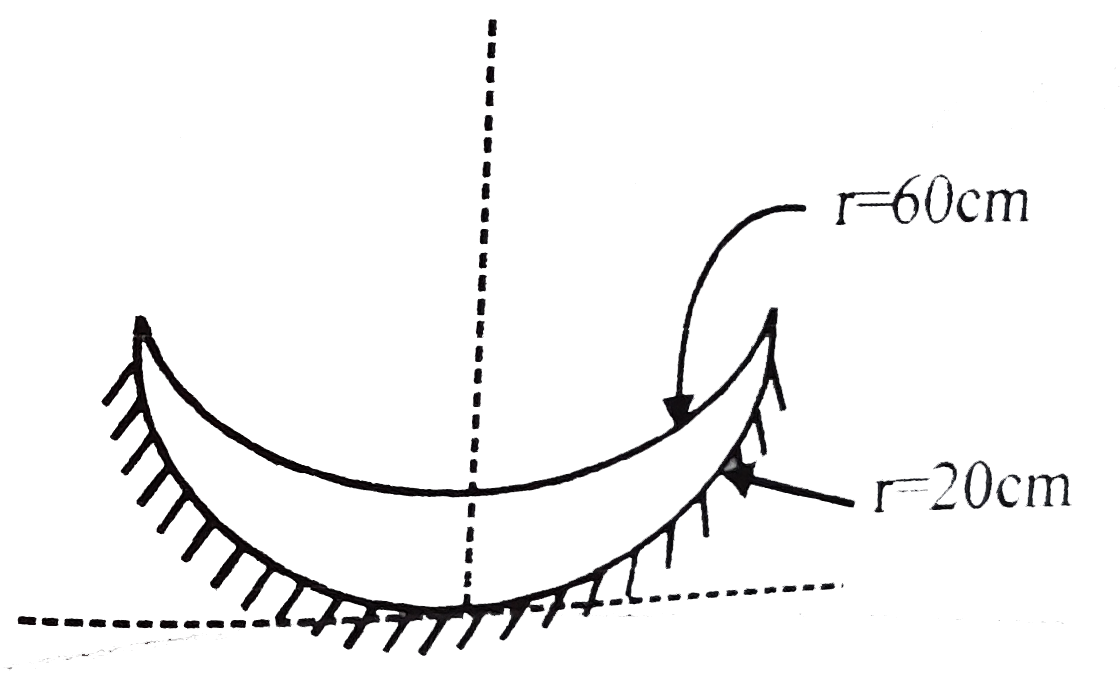
The combination behaves likeAA concave mirrorBa convex mirrorCa concave mirrorDa convex lensThe concave surface of a thin concavo -convex lens of glass of refractive index1.5has a radius of curvature of 20cm.The concave surface has a radius of curvature of 60cm.The covnex side is silvered and placed on a horizontal surface as shown in the figure.
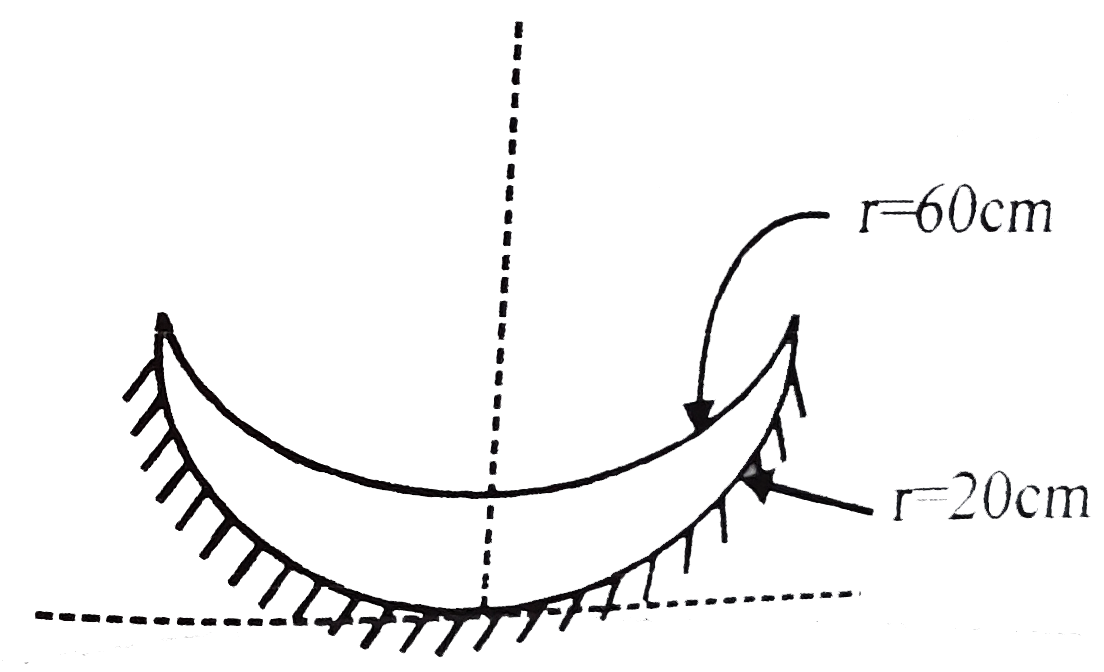
The focal length of the combibnation has the magnitude.A15cmB8.6cmC7.5cmD1.5cmThe concave surface of a thin concavo -convex lens of glass of refractive index1.5has a radius of curvature of 20cm.The concave surface has a radius of curvature of 60cm.The covnex side is silvered and placed on a horizontal surface as shown in the figure.
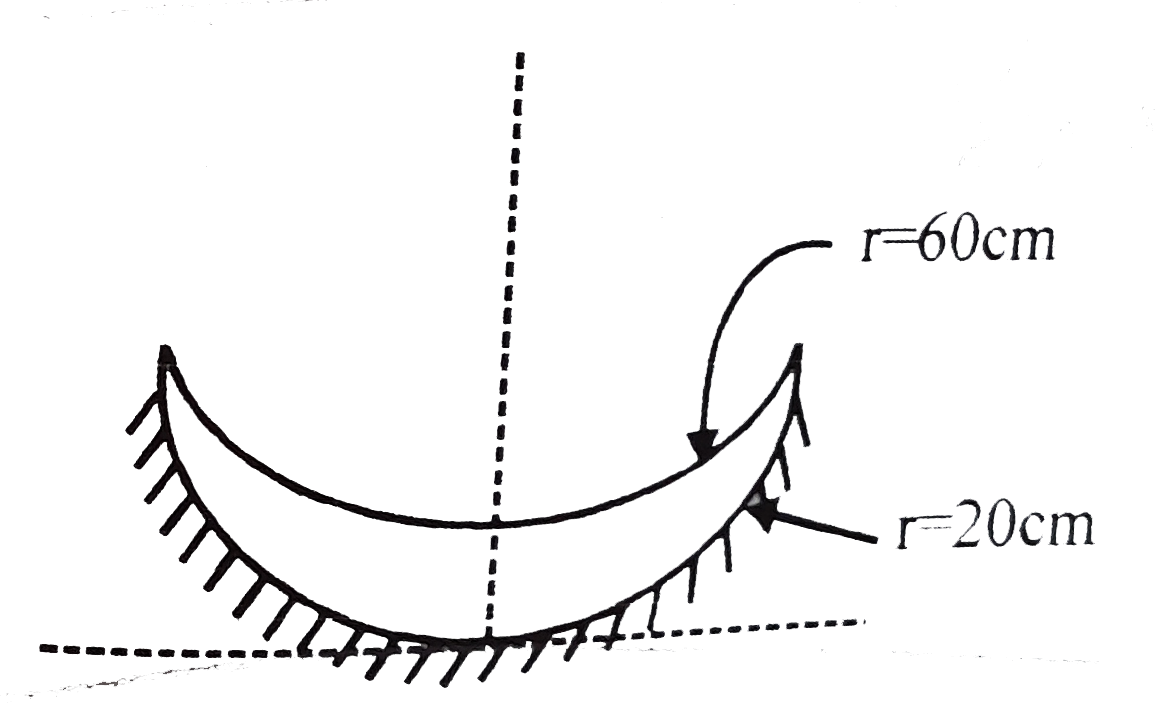
A small object is placed on the principal axis of the combination,at a distance of 30cmin front of the mirror.The magnification of the image isA−13B34C5Dnone of these
The convex surface of a thin concavo-convex lens of glass of R.l. 1.5 has a radius of curvature 20 cm. The concave surface has a radius of curvature 60 cm. The convex side is silvered and placed horizontally.
Q Where should a pin be placed on the axis such that its image is formed on the same point.
View SolutionThe convex side of a thin concavo-convex lens of glass of refractive index 1.5 has a radius of curvature of 20cm. The concave surface has a radius of curvature of 60cm. What is the focal length of the lens? The convex side is silvered and placed on a horizontal surface. What is the effective focal length of the silvered lens? The concave part is filled with water with refractive index 1.33. What is the effective focal length of the combined glass and water lens? If the convex side is silvered what is the new effective focal length of the silvered compound lens?
View SolutionThe convex side of a thin concavo-convex lens of glass of refractive index 1.5 has a radius of curvature of 20cm. The concave surface has a radius of curvature of 60cm. What is the focal length of the lens? The convex side is silvered and placed on a horizontal surface. What is the effective focal length of the silvered lens? The concave part is filled with water with refractive index 1.33. What is the effective focal length of the combined glass and water lens? If the convex side is silvered what is the new effective focal length of the silvered compound lens?
View SolutionThe convex side of a thin concavo-convex lens of glass of refractive index 1.5 has a radius of curvature of 20 cm. The concave surface has a radius of curvature of 60 cm. What is the focal length of the lens? The convex side is silvered and placed on a horizontal surface. What is the effective focal length of the silvered lens? The concave part is filled with water with refractive index 1.33. What is the effective focal length of the combined glass and water lens? If the convex side is silvered, what is the new effective focal length of the silvered compound lens?
View SolutionThe convex surface of a thin concavo-convex lens of glass of R.l. 1.5 has a radius of curvature 20 cm. The concave surface has a radius of curvature 60 cm. The convex side is silvered and placed horizontally.
Q If the concave part is filled with water of refractive index 4/3, find the distance through which the pin should be moved so that the image of the pin again coincides with the pin?

View Solution
